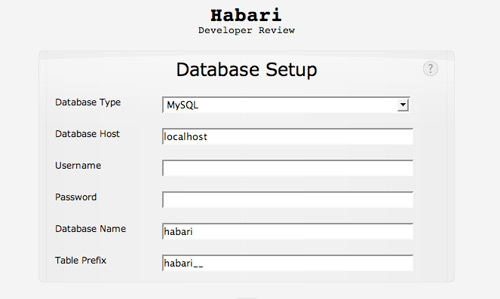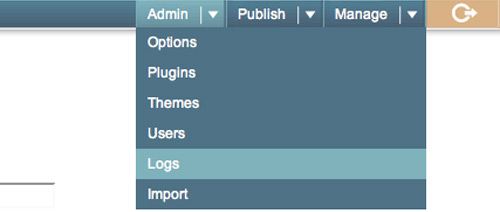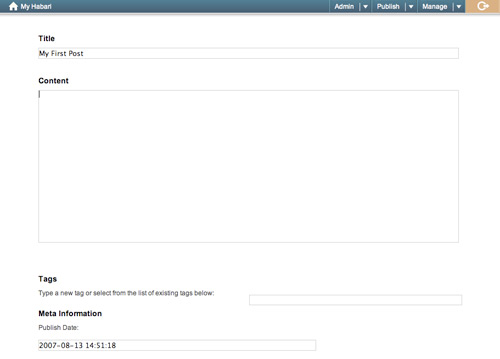Take one part die-hard WordPress contributors, combine it with one part up-to-date coding environment and you get Habari. It started less than a year ago with the idea from several WordPress users who wanted more control over what features get put into their blogging platform. The main difference is what's behind the front-end. Habari is, in a nutshell, a capable blogging platform "using all of this year's tools"; object-oriented code with PHP5, PHP Data Objects, and database independence with MySQL, SQLite and Postgres. While WordPress has been around for years and uses older yet tried-and-true coding practices to ensure maximum compatibility among various webhosts, Habari is more about efficient code to essentially provide a better performing platform. To get a better idea regarding what Habari is all about, I highly recommend you read this lengthy post by a Habari founder.
There are different reasons for using different tools as each has its strengths. I hope that time proves out Habari's choice to focus on community involvement in every step - planning, design, implementation, distribution, through support. Habari has also chosen to focus on modern technology and coding techniques that legacy systems are not as easily able to integrate.
Earlier this month, the second release of Habari's Developer Review was put online. I installed it on a server and took it for a test drive.
 Habari installation isn't as pretty as WordPress's matured and famous 5 minute install, but it's not far off. After an SVN checkout, directory chmod, creating a database and filling out the fields above, I was pretty much done.
Habari installation isn't as pretty as WordPress's matured and famous 5 minute install, but it's not far off. After an SVN checkout, directory chmod, creating a database and filling out the fields above, I was pretty much done.
 This is Habari's simple admin panel. It might look vaguely familiar from early mockups of Shuttle, a WordPress admin panel beautification project that never came to fruition. Habari doesn't have all the bells and whistles of WordPress by far but I find the drop-down navigation menus easier to work with. Rather than having to select a page first to see the sub-navigation as with WordPress, you can just hover over it - saving you a click.
This is Habari's simple admin panel. It might look vaguely familiar from early mockups of Shuttle, a WordPress admin panel beautification project that never came to fruition. Habari doesn't have all the bells and whistles of WordPress by far but I find the drop-down navigation menus easier to work with. Rather than having to select a page first to see the sub-navigation as with WordPress, you can just hover over it - saving you a click.

 At the moment, Habari's post page is fairly void except for a few fields.
At the moment, Habari's post page is fairly void except for a few fields.
 The bottom of the Habari admin panel has a small bar with basic blog stats and more importantly, a notification system to let you know if your Habari installation needs to be upgraded. This is an improvement over WordPress, where you have to know what version you are running and keep up with the news to see if there is a new WordPress version out. Although, this is in the works for WordPress.
The bottom of the Habari admin panel has a small bar with basic blog stats and more importantly, a notification system to let you know if your Habari installation needs to be upgraded. This is an improvement over WordPress, where you have to know what version you are running and keep up with the news to see if there is a new WordPress version out. Although, this is in the works for WordPress.

Finally, this is the default blog installation for Habari; a plain K2 theme.
Overall
Habari is bleeding edge software right now and not fit for production use. However, that doesn't mean you should ignore it. It's no secret that I am a website performance and optimization junkie, all the more piquing my interest in Habari's cutting-edge back-end code. It will take a considerable amount of time for Habari to round up faithful users and establish a community capable of creating useful plugins and themes to lure in regular users. Habari's creators didn't set out to create a WordPress competitor, just a blogging platform for a different kind of WordPress user. I applaud everyone's efforts for Habari and await further releases. In the meantime, I have been reading through WordPress's trac tickets for the 2.3 release, helping out where I can.
What do you think of Habari?